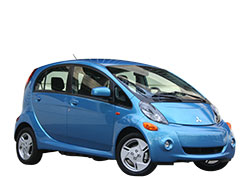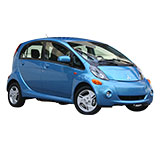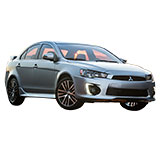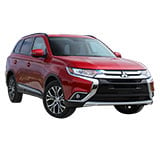2016 Mitsubishi i-MiEV Pros vs Cons

Instead, the focus would appear to be on efforts at repackaging the car, although with some feature upgrades and retouches. Key among the new features is the Approaching Vehicle Audible System.
The new 2016 Mitsubishi i-MiEV is offering you the all-electric driving experience at a price which reviewers have termed as very appealing. It is a couple of thousand dollars below what its closest competitors are offering.
Ten Reasons You May Like the 2016 Mitsubishi i-MiEV – The Pros
1) Powertrains and Performance
The 2016 i-MiEV rear-wheel-drive gets powered by an electric motor (49-kilowatt) with 66 horsepower plus torque at 145 pound-feet. These are fed by a lithium-ion battery pack (16-kWh). An Edmunds test had the i-MiEV going to 60 mph in about 14.7 seconds.
2) Car Interior Features
Inside, the 2016Mitsubishi i-MiEV has met the typical standards for any good subcompact car. Similar to lots of EVs, the i-MiEV can pre-condition the cabin for cooling or warmth.
Among the most notables features are:
- Keyless entry
- Steering wheel that is leather-wrapped
- Heated front seats
- Electric AC
3) Body Styles and Trim Options
The 4-door all-electric hatchback 2016 Mitsubishi i-MiEV seats 4 and is available in just one ES trim level. Besides the standard equipment, you will also get:
- Optional Level 3 charging port
- Charging timer
- Climate control remote system
4) Design Simplicity
Whereas a number of EV makers have opted for the showy and sophisticated route regarding the interfaces, buttons, and controls, the Mitsubishi 2016 i-MiEV has gone for simplicity.
- Only a simple trip meter in an easy to read LCD gauge shows the estimated range remaining figures.
- You turn the car on using a traditional-looking key.
- The car has a shifter that slides into gear
5) Infotainment System
Options for the infotainment system include a USB port for iPod connection and an entertainment/navigation system that has Bluetooth compatibility.
Other features are:
- 7-inch touchscreen
- Bluetooth audio and phone connectivity
- Audio controls for the steering wheel
6) External Features
On the external, the 2016 i-MiEV has attractive features and accessories. These include:
- Automatic headlights
- Fog lights
- Heated side mirrors
- Sports alloy wheels
7) Seating
Auto reviewers report that the tall body of the 2016 Mitsubishi i-MiEV offers sufficient headroom.
- Reviewers think that the i-MiEV provides a surprisingly large interior space.
- The US version being wider than the original Japanese car allows four adults to fit comfortably in there.
- The seating arrangement is pleasant.
8) Cargo Capacity
The i-MiEV, with only 13.2 cu.ft of space available behind the car’s backseat, comes with less cargo capacity compared to the majority of its main rivals. However, unlike the others, the foldable rear seats improve the capacity to a very commendable 50.4 cu.ft. There's ample room to squeeze in your standard-sized suitcase or the weekend golf clubs.
9) Safety
In a brake test by Edmunds, an i-MiEV stopped from a speed of 60 mph in about 120 feet, a fairly good achievement for an EV.
- The i-MiEV achieved a rating of 4 out of a maximum 5 in government crash testing, for overall protection.
- It got four stars for total frontal impact testing.
- Three stars for total side-impact assessment
10) Driving Impressions
When you drive the i-MiEV in city traffic, it has some great advantages.
- Frequent stops and low speeds help in maximizing its range.
- Test drivers have achieved an81 mph top speed in the 2016 Mitsubishi i-MiEV, which though not particularly fast is considered adequate for the majority of U.S. cities.
Reasons You May Not Like the 2016 Mitsubishi i-MiEV – The Cons
1) Less Practical
Although the 2016 Mitsubishi i-MiEV is going to cost you less compared to the competitors, significantly, it’s also less practical.
- Long charging times and limited driving range are some EV concerns, and the 2016 i-MiEV is especially challenged in both of these aspects.
- Perhaps even a bigger problem is how the car struggles to come to speed as you merge into freeway traffic.
- This tiny electric hatchback is perhaps best suited for your city driving rather than for commuting to and from the city suburbs.
2) Low EPA Estimates
The estimated range by EPA for this diminutive Electric Vehicle is an unimpressive 62 miles.
- The majority of competitors are going well over that mark.
- In fact, many EVs in the US market today can attain at least 80-90 miles before the electrons run out.
3) Battery Recharging Times
Regarding recharging times, the outdated i-MiEV 3.3kW charger requires close to 22 hours to recharge your depleted battery pack fully, using an 110-volt outlet.
- Mitsubishi has claimed that the newer Level 2 and three battery chargers recharge the Mitsubishi i-MiEVbattery much faster.
- The level 2 charger takes about 7 hours via a 240-volt outlet while the Level 3 takes less than an hour.
- The majority of rivals recharge in shorter times.
4) Safety Testing
When it comes to safety, standard testing by the IIHS has not been performed on the 2016 Mitsubishi i-MiEV. In fact, this is not likely to happen soon. This is because IIHS usually sets a minimum standard based on annual sales.
How it stacks up to the competition:
The 2016 Mitsubishi i-MiEV can be compared with several battery-EVs currently being sold across the US. Most notable among these are Tesla Model S, the Nissan Leaf, Kia Soul EV, VW e-Golf or even the Toyota Prius Plug-In Hybrid EV.
- The EPA has given the i-MiEV a 30 kWh per 100 miles rating energy consumption estimate, which is almost on par with the Volkswagen e-Golf and the Nissan Leaf.
- The i-MiEV may not be as swift as it attains 60 mph in about14 seconds; the Nissan Leaf will do the distance in approximately 9.5 seconds.
- Regarding load capacity, the i-MiEV has similar statistics to the Kia Soul EV and the VW e-Golf when their rear seats are folded.
To date, only i-MiEVs 2,000 have been sold across the US and in comparison, the Nissan Leaf, coming to the to market behind the i-MiEV, has already sold more than 75,000 units.
Conclusion
After sluggish sales over a couple of years, auto giant Mitsubishi took the i-MiEV off from the 2015 model year with the hope that demand would catch up with the supplies. In 2016 model year, a slightly revised version makes a return to the showrooms. The new 2016 Mitsubishi i-MiEV comes up for sale towards the end of March 2016.
It might be advantageous to consider an all-electric auto if much of your daily driving entails making short city commutes. Charging stations are now becoming much more common across the US, and the positive prospect of having an agile, peppy 2016 Mitsubishi i-MiEV would certainly be a great experiment.




